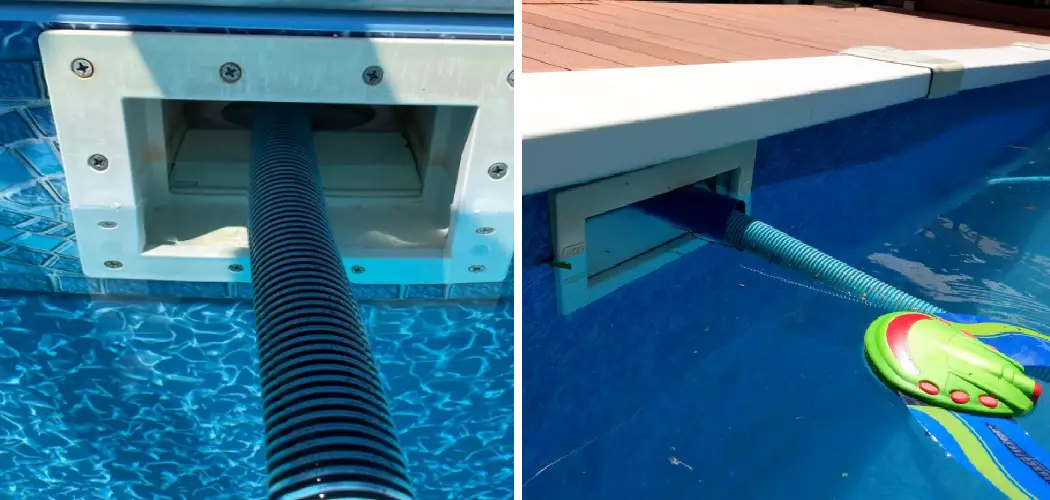Are you tired of dealing with unbalanced pool water and endlessly scooping out debris? If you are a proud owner of an in-ground pool, you know how important it is to keep on top of maintenance tasks such as draining and cleaning. With the right techniques in hand, your pool should stay sparkling clean year after year.
In this blog post, we’ll take a look at one particular maintenance task: draining your inground pool below skimmer level. We’ll provide step-by-step instructions on how to drain an inground pool below skimmer, including prepping the area, setting up grounds drainage capabilities, and starting the process until completion.
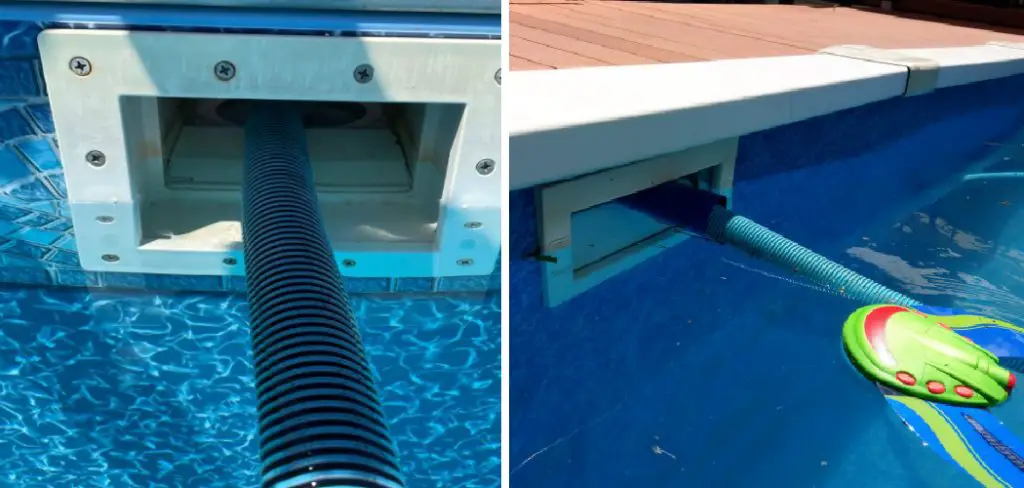
By following our tips and advice, you will quickly become an expert at performing this essential upkeep with ease! You will also learn about safety measures and best practices for sensibly using your pool’s drainage system while avoiding costly mistakes. Read on for more information!
Things to Consider While Draining an Inground Pool Below Skimmer
Before you begin the process of draining an inground pool below the skimmer level, it’s important to consider a few key factors. Here are some things that may impact your safe and successful completion of this maintenance task:
1. Groundwater Levels
How close is the water table in your area? If your groundwater levels are high, it’s important to ensure that you have taken adequate safety measures for the pool’s drainage system to avoid potential flooding.
2. Size of the Pool
The size of your in-ground pool will directly affect how long it takes to drain below the skimmer level. Consider any large pools as they may require additional draining equipment and an increased amount of time.
3. Time of Year
The time of year you undertake this task may also influence the drainage process. Depending on your climate, winter or summer months may be more suitable for draining an inground pool below the skimmer level.
Required Items for Draining an Inground Pool Below Skimmer
Before you begin draining your inground pool below skimmer level, it’s important to make sure that you have the necessary items on hand. Here is a list of equipment and materials that will come in handy during this process:
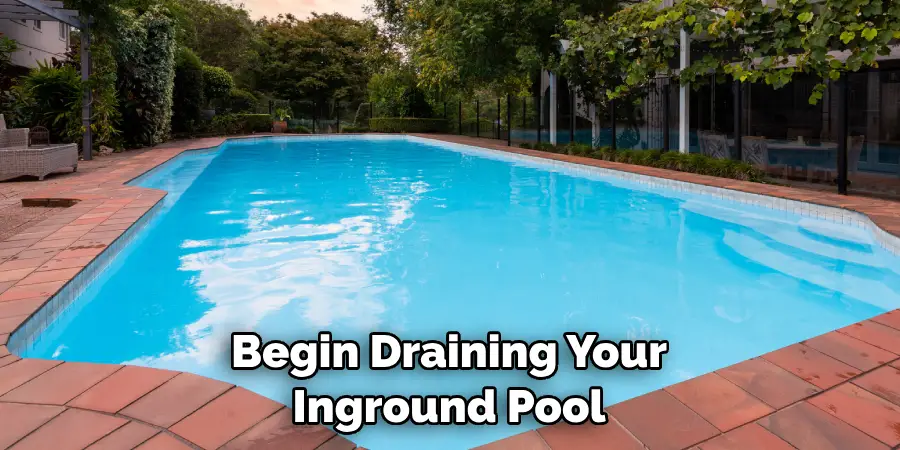
- Garden Hose
- Extension Cords
- Shop Vacuum
- Drain Cover
- Leveling Tool
- Submersible Pump
10 Ways How to Drain an Inground Pool Below Skimmer
Now that you have all the items you need, it’s time to begin draining your inground pool below the skimmer level. Follow these easy steps:
1. Remove Debris
Remove any debris from the pool and its surroundings. Dirt and debris can clog the skimmer, so it pays to have this area clean before you start. Keep in mind that any debris left in the pool can also cause a lot of work when you’re refilling it.
2.Empty Skimmer Baskets
Empty all skimmer baskets to ensure nothing is obstructing the flow of water. This will help prevent any blockages and delays during the draining process. If you don’t have skimmer baskets, use a net to scoop out any debris.
3.Level the Pool
Use a leveling tool to ensure that the pool is leveled correctly. This will help you maintain an even flow of water throughout the draining process and prevent any damage from occurring to your pool as it is emptied.
4. Set up the Pump
Attach the submersible pump to a power source and then place it in the deepest part of your pool. Make sure that all connections are properly secured before you turn on the power.
5. Set up Hoses
Connect one end of your garden hose to the pump and run the other end away from your pool. Ensure that you have plenty of room for the hose and that it is securely attached to prevent any issues during the draining process.
6. Ensure Proper Setup
Check all connections, hoses, pumps, and skimmer baskets again to make sure everything is properly set up. Make sure that all power sources are properly secured as well! Ensuring that everything is in order will save you from potentially costly mistakes.
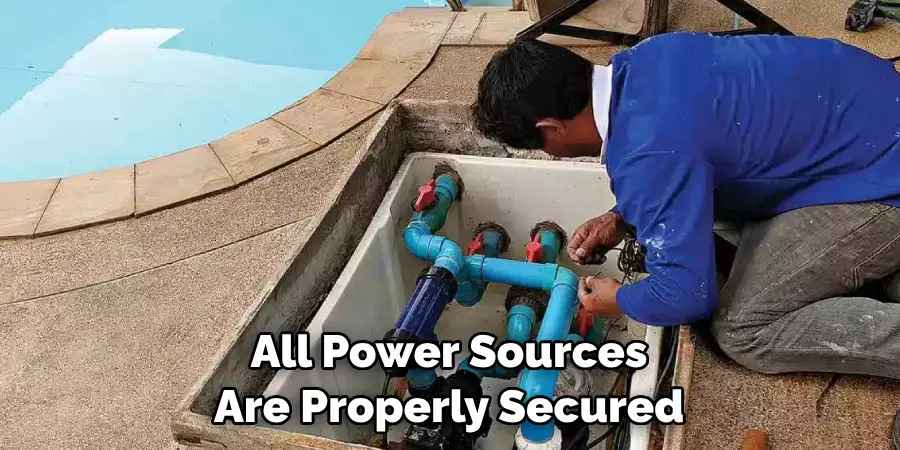
7. Start the Pump
Turn on the pump and monitor its progress as it begins to draw water out of your pool. You may need to adjust the flow rate depending on your desired outcome, so keep an eye out for any changes in speed or pressure.
8. Drain the Pool
Allow the pump to continue running until the desired water level is reached. In most cases, this should be around 2-4 inches below the skimmer level. Draining the pool below this level is not advised, as it can cause damage to your pump.
9. Clean and Maintain
Once you’ve drained your pool, take a few minutes to clean out any remaining debris and perform any maintenance tasks that may be necessary. This will ensure that your pool is ready for use once it has been refilled!
10. Turn Off the Pump
When the desired water level is reached, turn off the pump and disconnect all hoses and power sources. It’s also a good idea to turn the pool’s filtration system back on before refilling it with new water.
Draining an inground pool below the skimmer level is a simple process that can make maintaining your pool a lot easier. By following the tips and advice in this blog post, you should be able to complete the task with relative ease and minimal effort.
8 Safety Precautions to Follow
When draining an inground pool below the skimmer, there are some safety precautions that should be followed to avoid any potential risks.
1. Shut off all power sources going to the pump and filter system before beginning the process of draining your pool. This includes both the main disconnect switch as well as any breakers associated with the equipment.
2. Before draining the water, you should make sure to inspect the skimmer and pump lid to ensure that they are tightly in place and secure. This will prevent any water from entering into the electrical system of the equipment.
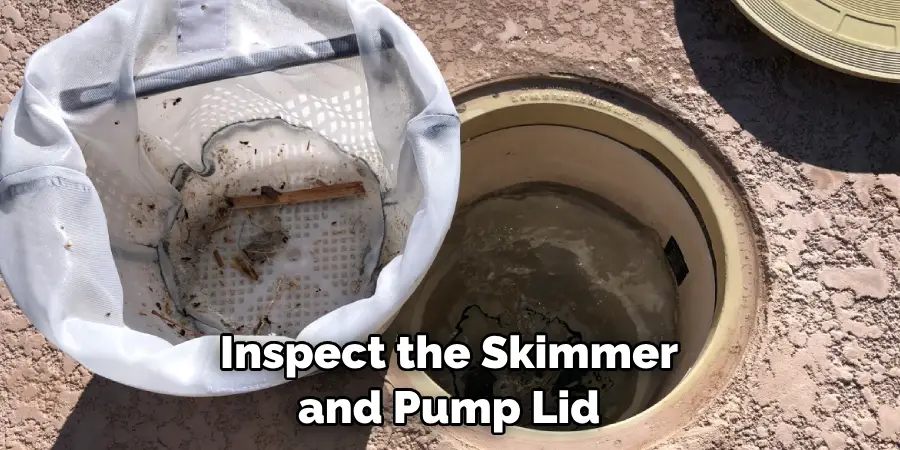
3. You should never drain a pool to its lowest possible level as this can cause permanent damage to your pool walls due to suction pressure.
4. Make sure to check the pH balance of your pool as it is draining, and adjust if necessary. Making sure to maintain a good pH balance while draining is important as it will help prevent any damage to the pool walls or stairs.
5. You should also keep an eye on the water level and ensure that you are not draining too quickly, as this can cause air pockets in the plumbing system, which could potentially lead to a blockage of water flow.
6. If you are draining a large amount of water, it is recommended to have a helper on hand with buckets or hoses to ensure that the area around the pool does not become flooded.
7. You should never attempt to drain your pool without proper safety equipment and clothing, such as goggles and gloves. Safety wear is necessary to protect yourself from any chemicals or debris that may be in the water.
8. Lastly, it is important to remember not to overfill your pool when refilling after draining; this could cause serious damage due to water pressure. Be sure to monitor the level of water as you refill and stop when it reaches the desired level.
By following these safety precautions, you can ensure that the process of draining your inground pool below the skimmer goes smoothly and without any unexpected risks. The last thing anyone wants is to cause damage to their pool from improper draining, so it’s best to take all necessary steps when beginning this project.
Frequently Asked Questions
How Long Will It Take to Finish the Project?
The amount of time needed to drain an inground pool will depend on the size and depth of the pool, as well as the rate at which the water can be removed. Generally speaking, it could take anywhere from a few hours for a smaller pool to multiple days for larger pools. It is important to ensure that you do not try to rush the process, as this can cause damage to the pool.
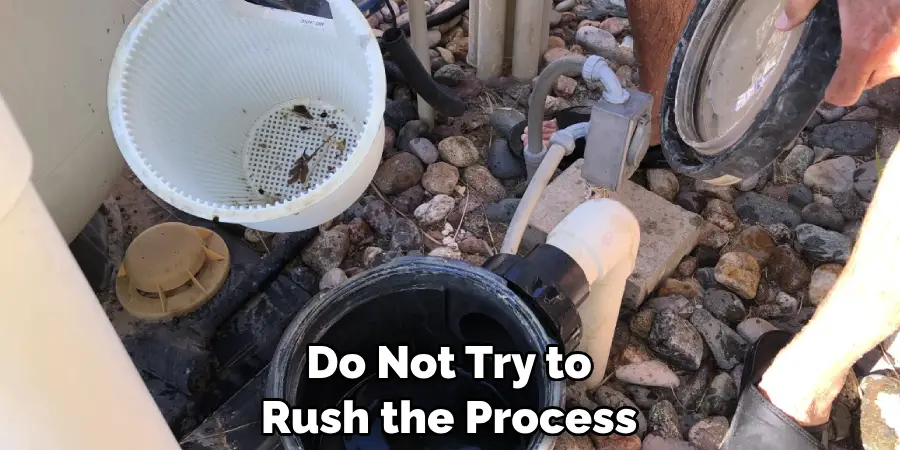
What Is the Best Way to Safely Drain an Inground Pool?
The most important thing when draining an inground pool is to do it in a safe and responsible manner. This means following all local zoning codes, using proper safety gear such as goggles and gloves, and not overfilling your drain. It is also important to consider the possibility of having to add water back into the pool after draining.
So it is best to leave a few inches of water at the bottom for that purpose. Lastly, it is key to be aware of and follow all manufacturer instructions in order to avoid damaging your pool or property.
Conclusion
Taking the time to properly drain an inground pool below the skimmer is a necessary part of its routine maintenance. Though it may be difficult to find yourself in a situation where you need to do this, taking the right steps, as outlined in this post, can make the process go much more smoothly.
In doing so, you are then able to bring your pool to its normal water level and prevent any further damage from occurring.
Furthermore, having knowledge of how to drain an inground pool correctly will save you from having to hire someone else to do it for you, saving money in the long run. In conclusion, while draining an inground pool below a skimmer is not always easy.
Understanding the proper steps on how to drain an inground pool below skimmer helps keep it running safely – which is well worth spending time and effort for.
You Can Also Check This Out to Do You Fix an Unlevel Pool Without Draining It

